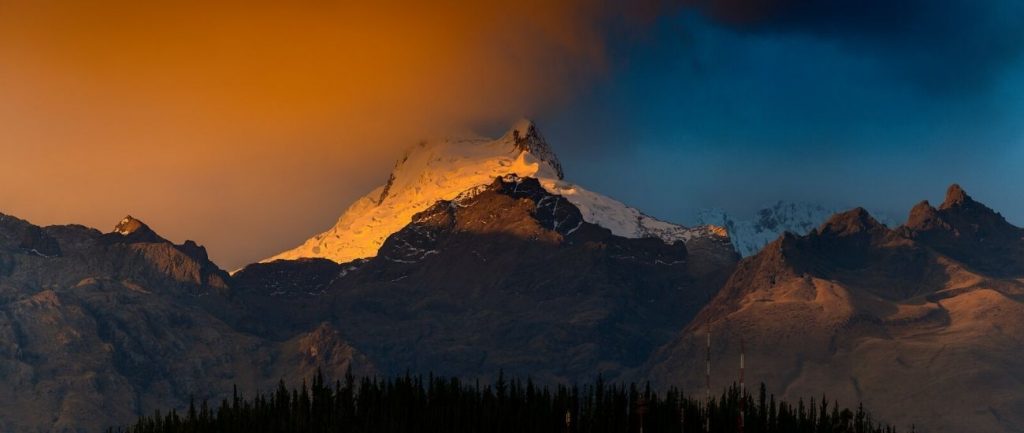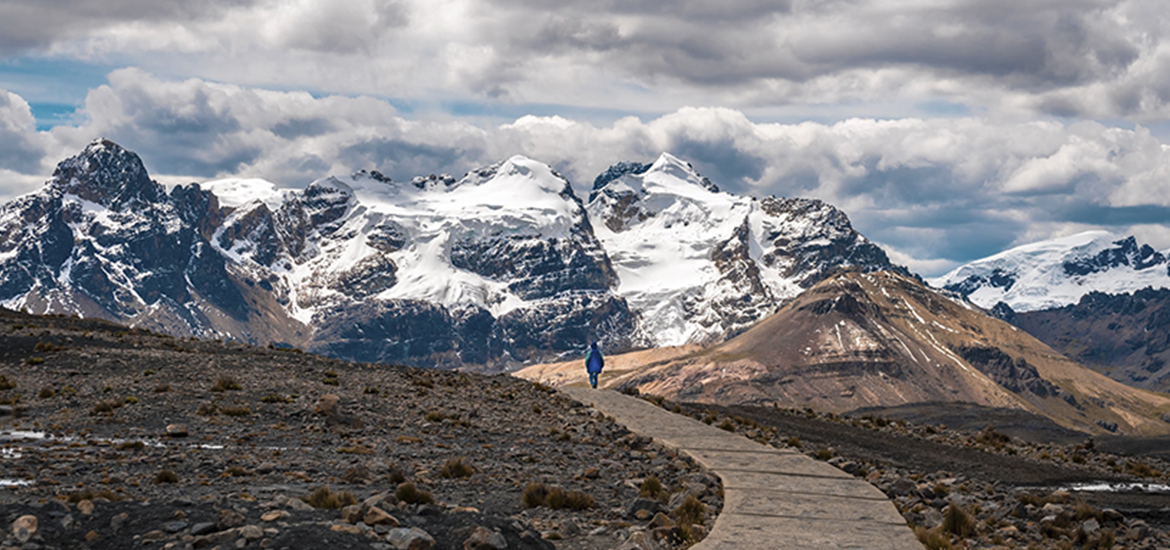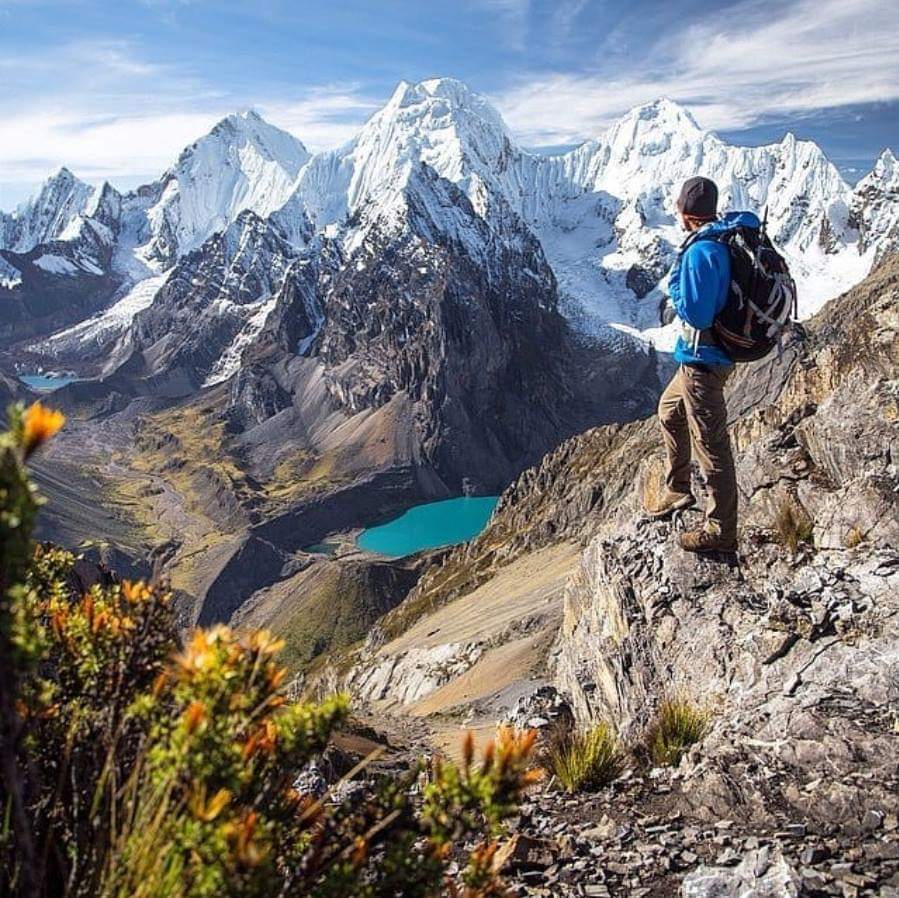From the coast to the highlands and rainforest, Peru is among the nations with the greatest natural diversity. Because of this, it is growing in popularity among thrill-seekers and vacationers worldwide.
The Andes in Peru are the tallest mountains outside Asia and the longest continental range globally. Peru is a top trekking spot because of its stunning landscapes, snowy mountains, and captivating trails.
For those who enjoy the exciting, daring, and awe-inspiring scenarios, continue reading the selection of the best spots we made for you.
Top 7 best treks in Peru
1 Rainbow Mountain
The mountain is also known as Seven Color Mountain or Vinicunca in Quechua, an ancient Inka language famous for its natural tones and colorful mountains. The hike to Rainbow Mountain will normally take around 3 hours, but that will depend on your speed and level of physical fitness.
Most of the trail is level. However, the last part is steep and at a high altitude, which can make things challenging at the end of the hike. Walking at a relaxed pace is recommended, and by the way, you will be able to enjoy the natural beauty surrounding you.
When you reach the mountain’s highest peak, you’ll have amazing panoramic views of not only the rainbow mountain but also the Red Valley, a red-colored place that contains iron oxide in the rocks and gives the Red Valley its singular coloration.
Consider that the Andes have mainly just two seasons: the dry season, lasting from roughly April until October; and the rainy season, lasting from November until March (with the months of heaviest rains being January and February) The seasons start transitioning in April and October, so these months are good options to come.
Make sure to bring clothes for all kinds of weather since the weather there may change quickly, a lot of water, snacks, UV sunscreen, sunglasses and some Peruvian soles. Don’t forget to take photos with the alpacas! ¡You will see lots of them!
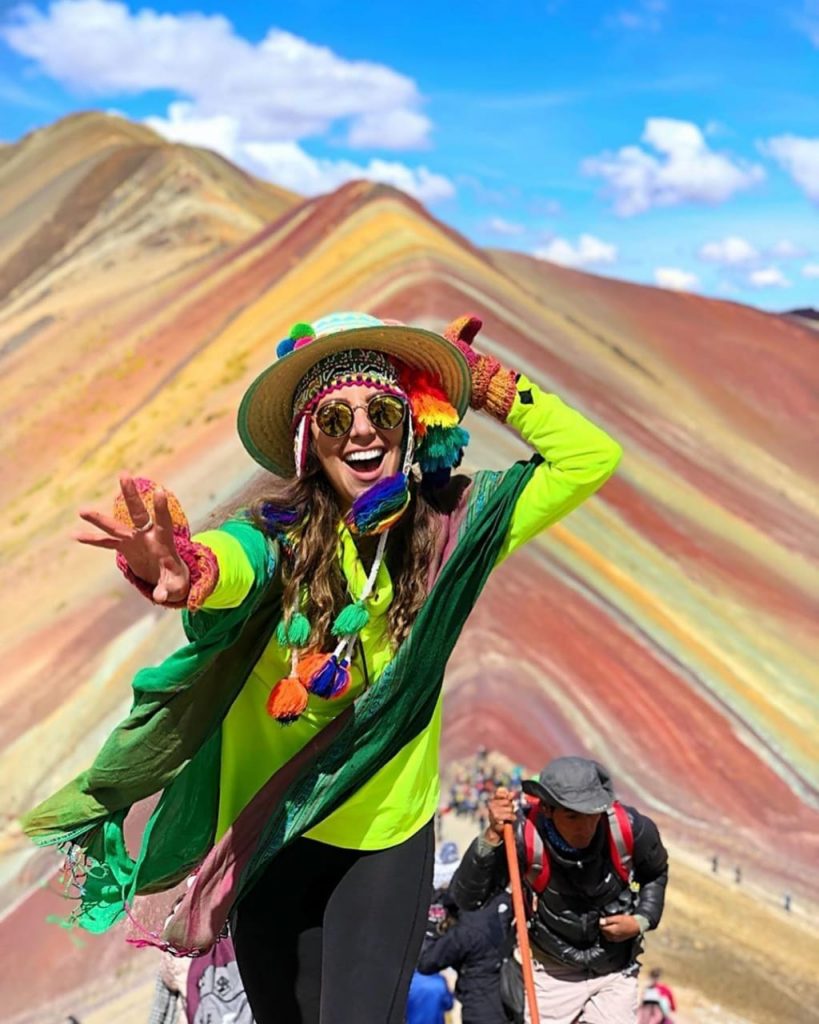
2 Huaylas Circuit.
This one is perhaps the one that’s getting more attention from trekkers these days since it is a world-class destination for them. We can say that the Huaylash circuit is like a candy shop for trekkers: The government has improved infrastructure and security measures, tourist flow is moderate, and most of all, you’ll see stunning glacier lakes and unique scenarios. You’ll see why it’s worth doing even if it’s one of the hardest on our list.
Most tours run from 8 to 12 days depending on how much distance you can hike per day, it starts leaving Huaraz with a certified guide. During the days you’ll trek this circuit, you’ll find crossing passes between 4600m and 5000m, you’ll camp near the pristine color lakes under the snow-capped mountains, following trails that will take you to natural viewpoints where you’ll have views that you are not going to forget in your life.
You’ll have the chance to visit legendary places, such as Siulá Grande mountain, well known because Joe Simpson wrote ‘Touching the Void’ after climbing this mountain.
The best season for trekking this mountain national park circuit is from May, the month when the dry season begins until the end of September; before the first days of October fall the first rains; even during the months of the dry season (May – September).
We have some rainy days, but in general, during the full 12-day journey, it is not normal for the bad weather to exceed 2 days, so it is recommended always to carry rain gear. For additional in-depth information about the 12-day adventure we are offering, click this link.
3 Colca Canyon
¡Welcome to the one of the deepest canyons in the world! Approximately twice as deep as the famous Grand Canyon in North America, definitely a must-see for many national and international visitors. Differing from the previous ones, this one is lower in altitude and instead of hiking mountain passes, you’ll hike the canyon’s sharp walls.
We can say that there are three ways to get to the canyon: A three-day Colca canyon tour and the most comfortable one since you’ll take your time to enjoy the canyon surroundings and have more time to rest. The second alternative is the two-day trek, with a long first day but a second one that will allow you to stay in Chivay picturesque little town before exploring the Colca Canyon. See this alternative by clicking on it. Colca Canyon 2-day tour
Regarding the one-day trip, it will save you time and you’ll see the condor on their majesty while the sun is rising, however, it involves a round trip of around 8 hours from Arequipa, Canyon’s closest large city.
The attraction you will see is Cruz del Condor, a natural viewpoint that will give you a breathtaking view of the whole Colca Canyon and the Condor, one of the largest birds in the world. Tip: The recommended time to visit this extraordinary viewpoint is between 9 and 11:00 am.
About the small, picturesque- town of Chivay, we can say that is the entrance point for the Colca Canyon, which is located around 3651 m above sea level and is recognized for its cultural expression where most of its inhabitants have maintained their traditions almost untouched. From this location, you can glance at the outstanding scenery of the region, composed of the exuberant nature of the Colca valley and ancient agricultural terraces.
The last main attraction you may see visiting Colca Canyon is its warm hot springs. These thermal springs can be comforting after a strenuous journey through the canyon. The closest thermal springs are three kilometers away from Chivay town.
Here you can choose indoor or outdoor pools with views of the authentic natural landscape of the region. The water temperature can reach up to 38°C and locals believe it to have curative properties. Since Peru has only two seasons, you can enjoy the canyon in the dry or rainy season.
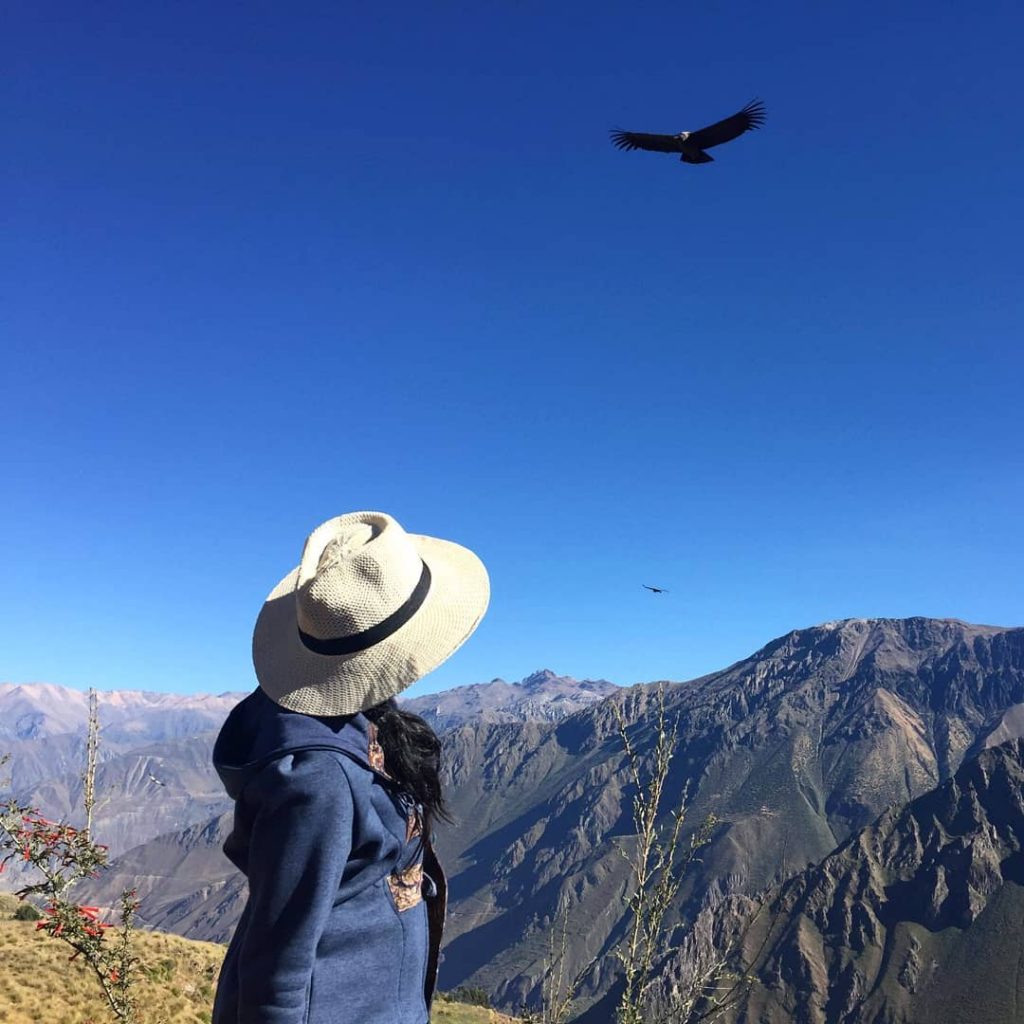
4 Ausangate Trek Lodge version
The classic Ausangate route is a super strenuous trek, although – as with Salkantay – there is a lodge version that brings comfort to enjoy the experience. The landscape has a beautiful, untamed, and uneven terrain. Stunning glacier mountains, turquoise lagoons of different sizes, and wildlife such as an abundance of raptors and vizcachas, a cousin of the chinchilla surround you. You can also find there some high mountain communities that shepherd their alpacas in the region and offer some of the most beautiful souvenirs you can get in Peru.
Along the route, there are hot springs where you may unwind and relieve your sore feet. The Ausangate mountain is located around 6,385 meters above sea level, making it one of the highest peaks in South America. The mountain is called Seven Color Mountain or Vinicunca in Quechua, an old Inka language known for its colorful mountains.
On this experience, you’ll stay in the cozy facilities of Andean Lodges. Four beautiful eco-lodges will give you the comfort you need as you make your way through the Andes.
Each of these stay options is located in remote and strategic locations, surrounded by towering mountains and even lagoons! During this trip, you’ll realize that the Andes are much more than just a range of mountains but are full of mysticism and spirituality. Ensure that the enduring vitality of the Andes will shine over you during this journey!

5. Choquequirao Trek
To put it simply, Choquequirao is referred to as Machupicchu’s younger sister. Although is not that popular to its more popular relative, its beautiful stone buildings make a unique contrast between the Andes and the heart of the cloud forest. This place is pretty impressive considering Spanish conquerors didn’t discover it. This complex possesses more than 1000 hectares and we know only 30% of it.
This trek requires 3 to 4 days allowing you the chance to dive into the experience of discovering another forgotten Inka Citadel, the difficulty is moderate to challenging, but you can trust us when we say that the effort is paid off day by day.
The trail starts at 2900 meters above sea level until 3050 meters on its highest point. During this trip, you will be crossing a different kind of ecosystems from rain forests to mountains and natural viewpoints. Choquequirao is a rising attraction in the Cusco region, and not many dare to hike to this archeological site.
You will find that Choquequirao’s ruins are equally as stunning as those at Machu Picchu, the more famous site, but without the throngs of tourists. So, if you’re looking for a more intimate, private, and adventurous trekking, Choquequirao is your best choice.
Keep in mind that Machupicchu Viagens can assist you in making the most of everything and that you can get additional information on Choquequirao here.
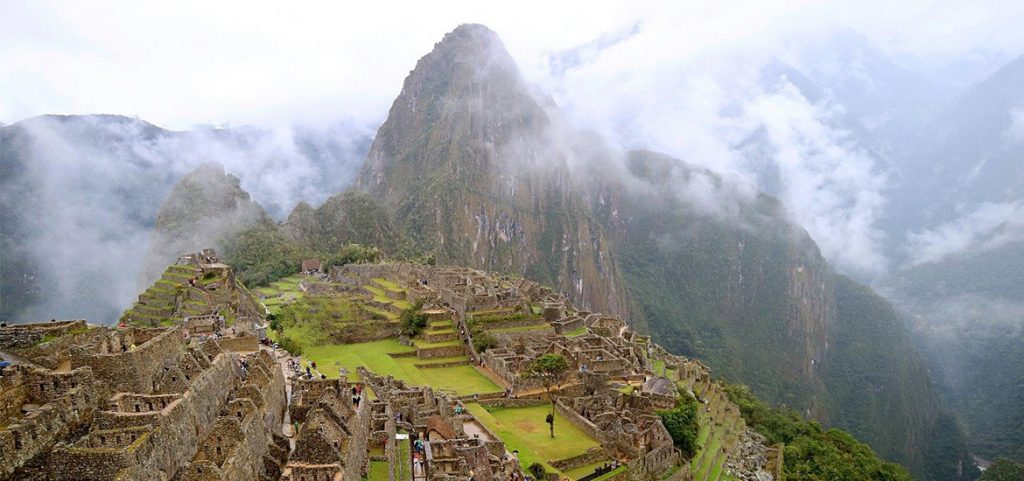
6 Lares Trek to Machupicchu
We’ll continue considering not-often trod hikes, this time we’ll talk about The Lares Trek to Machu Picchu, a seldom but at the same time good alternative after the Classic Inca Trail. The trek starts in Lares a small village three hours away from Cusco city and two hours from the sacred valley. Lares is nestled in the Andes Mountains, so from there, you will see stunning valleys and lakes before finally reaching Machu Picchu.
During this 4-day trek and along its 37 kilometers, you’ll see the spectacular mountain lake of Yanacocha, and the trek cherry cake, the warm thermal springs of Lares. An intriguing aspect of this route is that along the path you’ll get the chance to chat with locals and experience the traditional Andean people’s culture.
Also, you’ll witness some of Peru’s most magnificent fauna, including llamas and alpacas. This is the best option regarding the challenging Ausangate trek or the famous Inca Trail, the difficulty is moderate and is full of experiences and adventures you have to live.
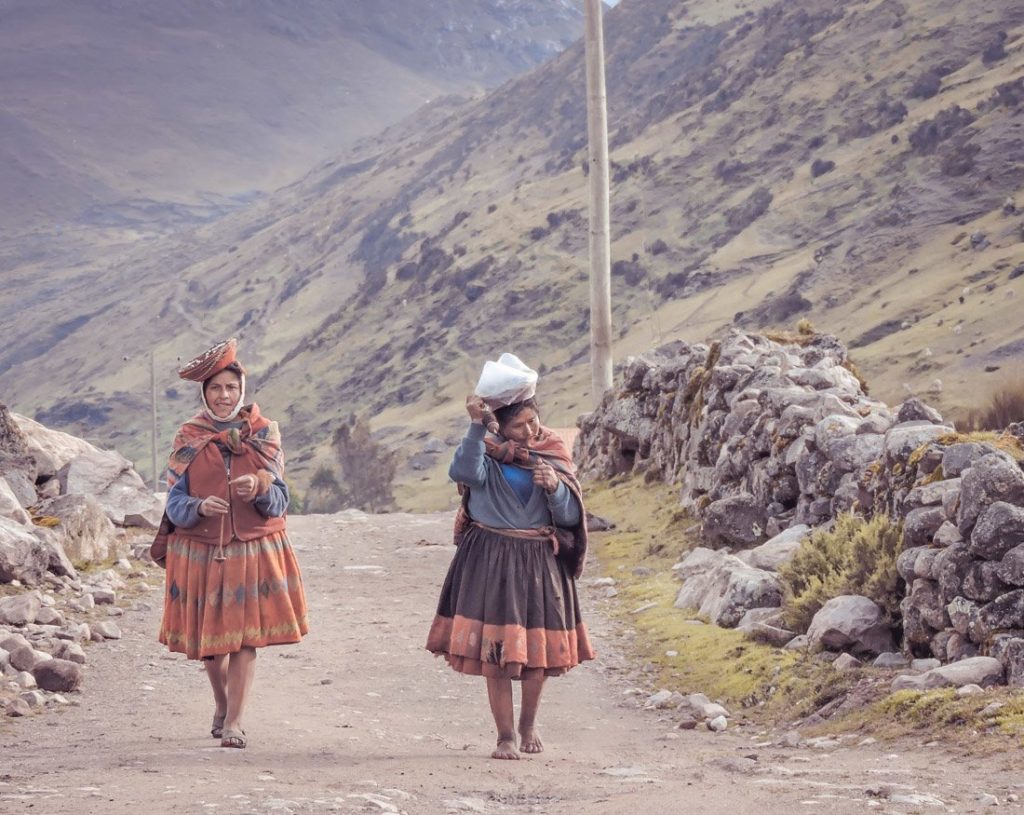
7 Inca Trail
We have the best for the end, The Inca Trail is the most famous hiking trail in Peru and leads to the famous UNESCO World Heritage site. This trail varies between 88 and 82 kilometers and takes you over 4000m above sea level, its difficulty is moderate.
The Inca Trail is special because it used to be a key trade route of the Inca Empire, with the original trail spreading across 25,000 miles (now it’s 25 miles). Some also believe that the Inca Trail used to serve as an annual pilgrim route, connecting the capital with Lake Titicaca, the place of Inti’s, the Incan God of Sun, birth.
You can also consider the experience. The Inca Trail passes through the Andes. It takes hikers through forests with birds. It also leads them to ancient Inca ruins
. Additionally, hikers will cross rivers on wooden bridges. All this is set against the backdrop of the Andes mountains. The Inca Trail experience truly is one of a kind.
Hiking the Inca Trail in Peru requires a licensed guide to accompany you on the trek. The Peruvian government has set this regulation to help manage the wear of the trail and ensure the safety of hikers. At this time only 500 people can get on the trail each day and with 300 guides and helpers, there is only space for 200 visitors.
For this reason, making reservations for the Inca Trail at least 8 or 12 months in advance of your visit is essential! There are two models for doing this trail: the Classic Inca Trail, which carries out the complete route described above and takes 4 days and 3 nights, and the Short Inca Trail, which covers only half of the itinerary and requires 2 days and 1 night. We can assist you in enjoying it as usual.
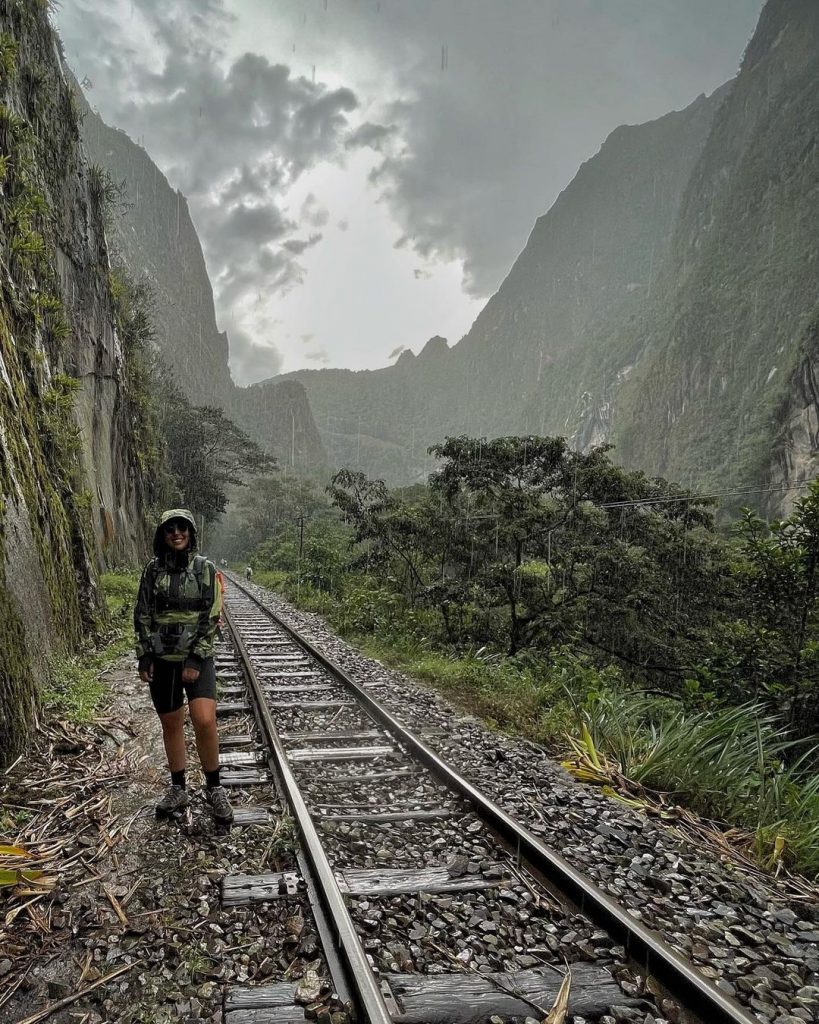
How to prevent and deal with altitude sickness?
Is normal to deal with altitude sickness given the fact that you’ll make a physical effort in high-altitude places. All the places that we mentioned in this blog are high, ones more than others, however, this altitude sickness could be more common than you think since you may not get used to being in high altitude places. Given that here are some tips for you to prevent it.
- Take some days to acclimate. At 8,202 feet (2,500 meters), experts recommend a day of initial rest to acclimate. If you continue ascending, rest every third day. Above 14,000 feet (4,267 meters), a two-day rest per 1,000 feet is recommended.
- If it’s possible, sleep in a low-altitude place. If you can, climb during the day and return to a lower altitude place to sleep. That can make altitude sickness bearable and you will acclimate quickly.
- Medications such as acetazolamide (brand name Diamox) or nifedipine can prevent altitude sickness and treat it. Local brands like Sorojchi Pills and Zaca Chewables may also be effective.

If you get altitude sickness that’s what you can do to deal with it.
- Drink lots of water
- The water will be your best ally to fight this condition, so make sure to drink enough vital liquid throughout your stay. Higher altitudes are associated with dehydration as a result of dryer air and more rapid breathing, causing a greater loss of bodily fluids.
- Avoid alcohol and smoking at all costs
Give yourself 48 hours before consuming alcohol or tobacco, particularly when on vacation. Higher altitudes make you lose more fluids from your body because the air is dry and you breathe faster. Although difficult, this is your best bet.
Being at higher altitudes makes you lose more fluids from your body revise the dry air and increase breathing. These could worsen dehydration and shortness of breath if ingested on your first days in Cusco or Arequipa. - Drink Coca tea or chew Coca leaves
Coca plant is an ancient medicinal herb that can relieve altitude sickness and aid in adaptation. You can either drink tea or just chew on the leaves.
- Have a light but high-calorie diet
Since high altitude places lower the digestion process, we can recommend having light meals based on high calories. You can consider including grains in your meals or snacks.
Viagens Machu Picchu can help you make the most of your trekking alternatives; click here for more details!
